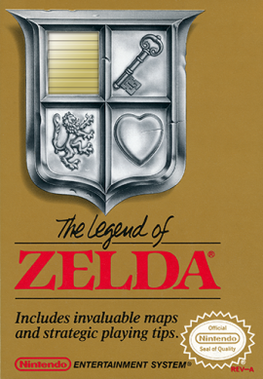
The Legend of Zelda, originally released in Japan as The Hyrule Fantasy: Zelda no Densetsu, is an action-adventure game developed and published by Nintendo. The first game of The Legend of Zelda series, it is set in the fantasy land of Hyrule and centers on an elf-like boy named Link, who aims to collect the eight fragments of the Triforce of Wisdom in order to rescue Princess Zelda from Ganon. The player controls Link from a top-down perspective and navigates throughout the overworld and dungeons, collecting weapons, defeating enemies and uncovering secrets along the way.
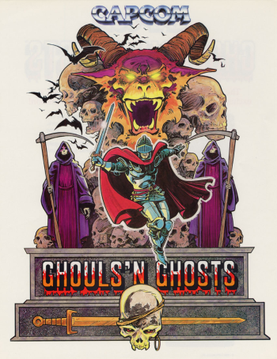
Ghouls 'n Ghosts, known as Dai Makaimura in Japan, is a side-scrolling platform game developed by Capcom, released as an arcade video game in 1988 and ported to home platforms. It is the sequel to Ghosts 'n Goblins and the second game in the Ghosts 'n Goblins series.
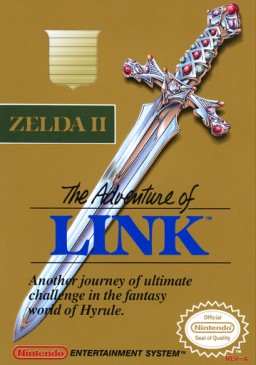
Zelda II: The Adventure of Link is an action role-playing game developed and published by Nintendo. It is the second installment in the Legend of Zelda series and was released in Japan for the Famicom Disk System on January 14, 1987—less than one year after the Japanese release and seven months before the North American release of the original The Legend of Zelda. Zelda II was released in North America and the PAL region for the Nintendo Entertainment System in late 1988, almost two years after its initial release in Japan.
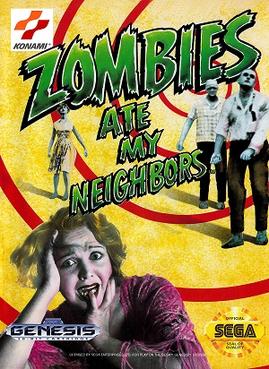
Zombies Ate My Neighbors is a run and gun video game developed by LucasArts and published by Konami for the Super NES and Sega Genesis consoles in 1993.

Ghosts 'n Goblins, known as Makaimura in Japan, is a platform video game developed by Capcom and released for arcades in 1985. It is the first game in the Ghosts 'n Goblins franchise, and has since been ported to numerous home platforms.
1989 saw many sequels and prequels in video games, such as Phantasy Star II, Super Mario Land, Super Monaco GP, along with new titles such as Big Run, Bonk's Adventure, Final Fight, Golden Axe, Strider, Hard Drivin' and Teenage Mutant Ninja Turtles. The year also saw the release of the Sega Genesis and TurboGrafx-16 in North America, and the Game Boy worldwide along with Tetris and Super Mario Land.

Super Castlevania IV is a 1991 platform game developed and published by Konami for the Super Nintendo Entertainment System. It has been re-released multiple times, including for the Super NES Classic Edition.

Wizards & Warriors, titled Densetsu no Kishi Elrond in Japan, is an action platform video game developed by Rare and published by Acclaim Entertainment for the Nintendo Entertainment System. It was released in North America in December 1987, and in Europe on January 7, 1990. The player controls Kuros, "Knight Warrior of the Books of Excalibur", as he sets out in the Kingdom of Elrond to defeat the evil wizard Malkil. Malkil holds the princess of Elrond captive in Castle IronSpire, deep within the forests of Elrond. The player fights through forests, tunnels, and caves, while collecting keys, treasure, weapons, and magic items.

Little Samson is a 1992 platform game developed by Takeru and published by Taito for the Nintendo Entertainment System. It was released in Japan on June 26, 1992, in North America on October 22, 1992, and in Europe on March 18, 1993.
LCD games are electronic games played on an LCD screen. Since the release of the Zelda Game & Watch game in August 1989, several LCD games based upon the theme of The Legend of Zelda have been licensed by Nintendo to be released for both Japanese and foreign markets. While Zelda was both developed and manufactured by Nintendo, later LCD games would only be licensed by Nintendo. The Legend of Zelda game watch is an LCD wristwatch game produced by Nelsonic as part of their Nelsonic Game Watch series, and Zelda no Densetsu: Kamigami no Triforce is an LCD fighting video game licensed by Nintendo and produced by Epoch Co. for the Barcode Battler II platform, and released only in Japan.
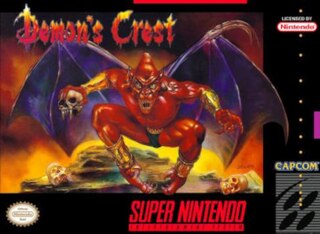
Demon's Crest, known in Japan as Demon's Blazon, is a side-scrolling platform video game developed and published by Capcom for the Super Nintendo Entertainment System. It is the third video game starring Firebrand, following Gargoyle's Quest and Gargoyle's Quest II.

Super Ghouls 'n Ghosts, known as Chou Makaimura in Japan, is a platform video game developed and published by Capcom for the Super Nintendo Entertainment System in 1991. As the third game in the Ghosts 'n Goblins series and the first not to be released for the arcade, it again depicts knight Arthur saving Princess Guinevere and the kingdom from Emperor Sardius, who has cast a spell that has revived the Ghoul Realm.
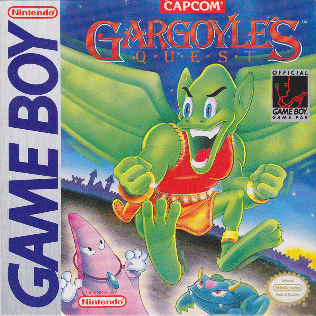
Gargoyle's Quest is an action-adventure platform game developed by Capcom for the Game Boy and released in 1990. It is a spin-off of the Ghosts 'n Goblins series, featuring the series antagonist character Firebrand as the main playable character. Gargoyle's Quest was followed by the NES prequel Gargoyle's Quest II in 1992 and the Super NES sequel Demon's Crest in 1994.

Gargoyle's Quest II: The Demon Darkness is a 1992 action-adventure game released on the NES by Capcom. It is the prequel to Gargoyle's Quest and features a similar gameplay style, which combines adventure elements with side-scrolling action in a macabre fantasy setting.

The Legend of Zelda: Phantom Hourglass is a 2007 action-adventure game developed and published by Nintendo for the Nintendo DS handheld game console. It is the fourteenth installment in The Legend of Zelda series and the direct sequel to the 2002 GameCube title The Wind Waker. Phantom Hourglass was released worldwide in 2007, with the exception of South Korea in April 2008. The game was re-released for the Wii U via the Virtual Console service in the PAL region in November 2015, in North America in May 2016, and in Japan in August.

Ghosts 'n Goblins, known in Japan as Makaimura, is a run-and-gun platform video game series created by Tokuro Fujiwara and developed by Capcom. The first entry in the series was Ghosts 'n Goblins, released in arcades on July 7, 1985. The series has subsequently been ported to and released on a variety of personal computers, game consoles and mobile platforms and spawned several sequels and spin-offs.
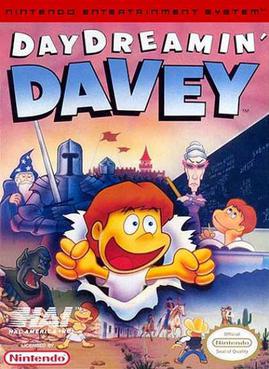
Day Dreamin' Davey is an action-adventure game developed by Sculptured Software and published by HAL Laboratory for the North American Nintendo Entertainment System in June 1992.
"Nintendo hard" is extreme difficulty in video games with trial-and-error gameplay and limited or nonexistent saving of progress. The enduring term originated with Nintendo Entertainment System (NES) games from the mid-1980s to early 1990s, such as Ghosts 'n Goblins (1986), Contra (1988), Ninja Gaiden (1988), and Battletoads (1991).
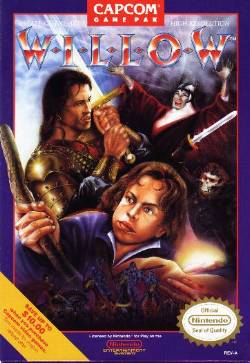
Willow is a 1989 2D action role-playing game developed and published by Capcom for the Nintendo Entertainment System. It is loosely based on the 1988 film of the same name and is the second title Capcom released based on Willow that year, the first being an unrelated side scrolling arcade game. The version of Willow released for the Nintendo Entertainment System and the Famicom is an adventure game in the vein of The Legend of Zelda.
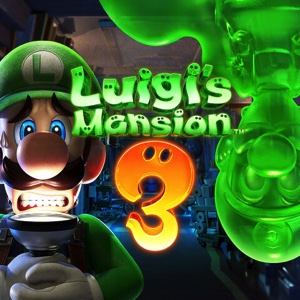
Luigi's Mansion 3 is a 2019 action-adventure video game developed by Next Level Games and published by Nintendo for the Nintendo Switch. It is the third installment in the Luigi's Mansion series following Luigi's Mansion: Dark Moon. The game sees players taking on the role of Luigi who must explore a hotel run by ghosts, incorporating different themes on each floor, and save his friends after the group is tricked into visiting it for a vacation by King Boo.

















